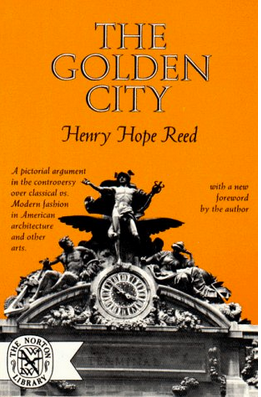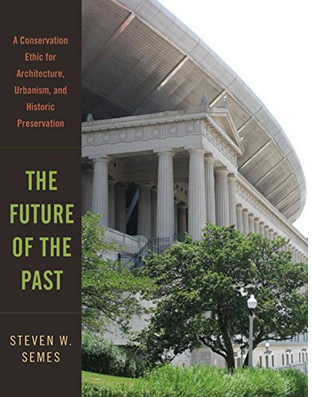
David Brussat
Making Dystopia
As an Amazon Associate, we earn from qualifying purchases made through affiliate links.
I’ve only just received a review copy of Making Dystopia: The Strange Rise and Survival of Architectural Barbarism, by James Stevens Curl. His title does not mince words. His publisher, Oxford University Press, offers instant credibility. The book will not just rattle the cage of modern architecture, it will shake modern architecture to its foundation, and speed the collapse of a cult that has the world by the throat.
Or it should. Great condemnations of modern architecture, literary attempts to help common sense regain its superiority over folly, have tried and failed before.
This is not a review because I have not yet finished the book. I am only beginning Chapter 1, “Origins of a Catastrophe,” but here is a pungent passage from the preface regarding the “yawning chasm between architectural criticism and the facts of architectural history.” For example:
Whole generations have been informed that works by distinguished Arts-and-Crafts architects were “pioneering” designs of the Modern Movement, which is simply untrue, as anyone who really looks clear-sightedly at buildings by C.R. Mackintosh, C.F.A. Voysey, and others would immediately be able to understand. It is a curious problem, but it suggests that those who uncritically accepted such assertions are unable to use their eyes, and can only believe what they are told: indeed, they are not looking at all, but are superimposing the opinions of others, overlaying what they could see with what others wish them to see. In other words, they look with their ears.
Skinny-dipping in Dystopia’s great cleansing bath of debunkation suggests to me that no previous exposé of modern architecture has been more thorough in its examination of the cult’s bogus historical narrative. Apparently, even as they plotted the rejection of all previous architectural history, modernists were making up a history that painted a distinct evolution from “sources” in the past. Architectural historian Nikolaus Pevsner was the fictioneer-in-chief. Stevens Curl puts the lie to all his hogwash.
Pevsner’s Pioneers of the Modern Movement, he writes, was highly selective to the point of distortion, and included individuals who themselves objected to being seen as “pioneers” of a movement they regarded as an abomination. … Numerous hagiographies of the so-called “pioneers” Pevnsner canonized have been published [and] largely observed “through Pevsner-approved Bauhaus-tinted spectacles,” as the late Roderick Gradidge sagely observed.
Stevens Curl puts all of this under a stern microscope. “Making Dystopia,” writes fellow architectural historian David Watkin, of Cambridge, is “the most gripping and complete account of how architecture and urban planning were corrupted in the twentieth and twenty-first century, leading to a catastrophic deterioration of the build environment.”
The author, a scholar at Oxford and elsewhere with 40 volumes of architectural history under his belt, including the Oxford Dictionary of Architecture (2016), is far from the first to notice that modern architecture does not add up - its founding ideas are ridiculous; its history makes no sense; its buildings do not behave more efficiently, as claimed, than those of the past; and only those with personal or career interests in the fields of architecture, art and design claim to find them attractive.
Among the first to point out the obvious was Henry Hope Reed’s The Golden City (1959), which juxtaposed modernist buildings in New York City against the classical buildings razed to make way for them. No words necessary. (Not that Reed failed to provide them.) He eventually founded the Institute of Classical Architecture & Art (originally Classical America) to fight back against modernism.



Tom Wolfe’s From Bauhaus to Our House (1982) was the first attack upon modern architecture directed at a mass audience. Wolfe described in his inimitable fashion the cuckoo clocks who founded modern architecture. His descriptions of the intellectual competition among various “compounds” of modernists leading up to and beyond World War II described them accurately, effectively ridiculing them with their own words and designs. Bauhaus became a bestseller, and remains widely read, but modern architecture has failed to go out of print.
Steven Semes, a leading architectural theorist at Notre Dame’s classically based school of architecture, wrote The Future of the Past: A Conservation Ethic for Architecture, Urbanism and Historic Preservation (2009). It remains the most comprehensive effort to describe straightforwardly why modern architecture has failed to create a humane built environment, and how it can be fixed. But it has not become a bestseller, and modern architecture marches on.
These are merely my three favorite critiques of modern architecture. Many other books have played important roles in exposing the myths of modern architecture. Let me just add another favorite, Exploding the Myths of Modern Architecture (2011), by Malcolm Millais. Boom! Boom! Boom! Gone? Not. Or his recently published Le Corbusier: The Dishonest Architect. Oh, yes. Anything by University of Texas mathematician Nikos Salingaros. And there are so many more. Yet modern architecture continues to survive its embarrassment, in part because modern architecture simply is not listening. Or seeing. It is blind, deaf and dumb. And we all know it. Yet it leaps from peak to peak in its destruction of our world. Why?
However important ideas and the books that spread them must be to a revival of good sense in our built environment, I fear that only through politics will the job be accomplished. But politicians do not seem the least bit interested in the livability of cities as an issue. There must be a vital missing link between ideas and a jumpstarting of change and reform that can refloat the ship of architecture. I hope to find it in Making Dystopia so that we can unmake dystopia. First, I must read the book.
For 30 years, David Brussat was on the editorial board of The Providence Journal, where he wrote unsigned editorials expressing the newspaper’s opinion on a wide range of topics, plus a weekly column of architecture criticism and commentary on cultural, design and economic development issues locally, nationally and globally. For a quarter of a century he was the only newspaper-based architecture critic in America championing new traditional work and denouncing modernist work. In 2009, he began writing a blog, Architecture Here and There. He was laid off when the Journal was sold in 2014, and his writing continues through his blog, which is now independent. In 2014 he also started a consultancy through which he writes and edits material for some of the architecture world’s most celebrated designers and theorists. In 2015, at the request of History Press, he wrote Lost Providence, which was published in 2017.
Brussat belongs to the Providence Preservation Society, the Rhode Island Historical Society, and the Institute of Classical Architecture & Art, where he is on the board of the New England chapter. He received an Arthur Ross Award from the ICAA in 2002, and he was recently named a Fellow of the Royal Society of the Arts. He was born in Chicago, grew up in the District of Columbia, and lives in Providence with his wife, Victoria, son Billy, and cat Gato.






